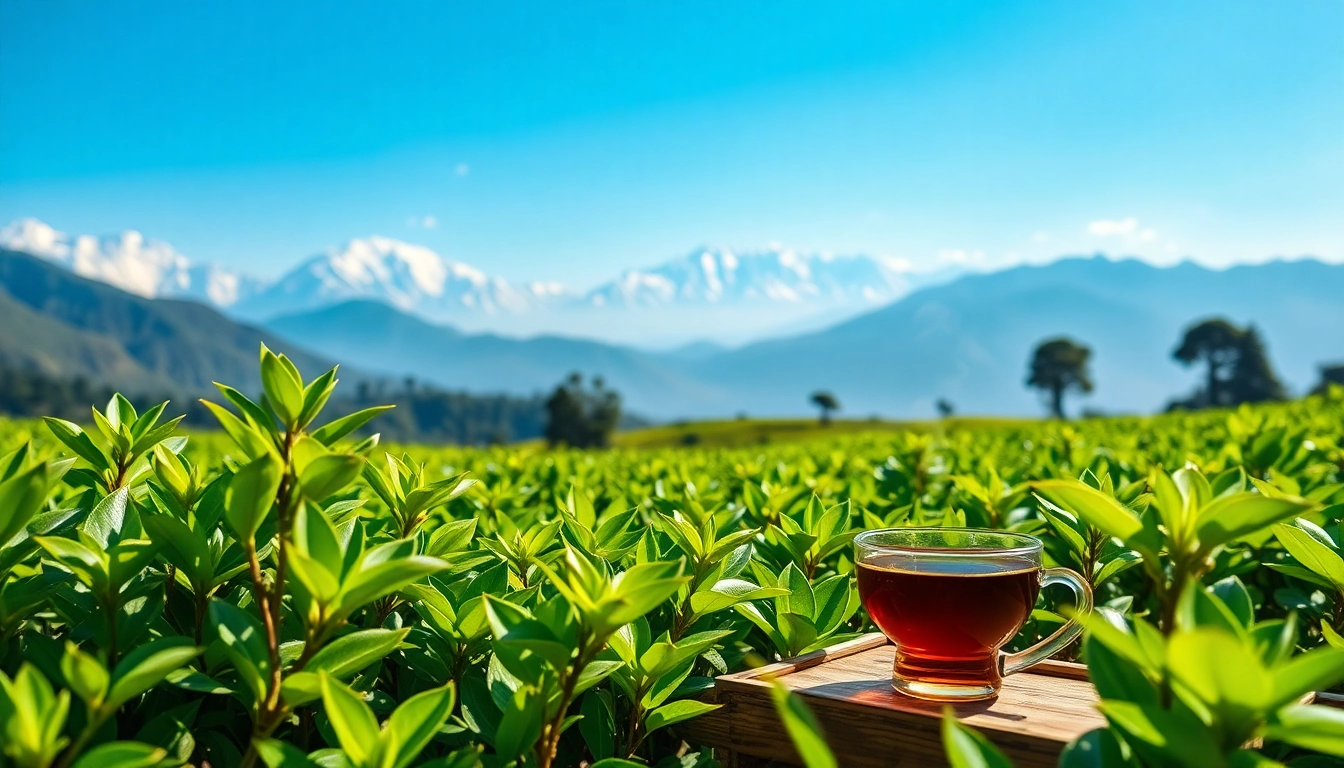
The Beauty and Diversity of Nepal Tea
Nepal tea is becoming increasingly celebrated worldwide, distinguished not only by its distinctive taste but also by its unique characteristics that set it apart from other teas globally. The diverse offerings of Nepal tea appeal to a wide array of tea lovers, making it a fascinating subject for exploration. Grown in the pristine high-altitude regions, this fine beverage boasts flavors that reflect the rich culture and environment of Nepal. For those intrigued by exploring the exquisite world of tea, Nepal tea is an essential addition to one’s tea repertoire. Let’s delve into the characteristics, comparisons, and specific regions known for producing exceptional Nepal tea.
Characteristics of Nepal Tea
Nepal tea is primarily derived from the *Camellia sinensis* plant, similar to other world-renowned teas such as those from China and India. However, what makes Nepal tea unique is primarily its terroir—an interplay of altitude, climate, and soil that influences its flavor, aroma, and appearance. Various types of Nepal tea, including black, green, oolong, and herbal varieties, showcase specific attributes based on their cultivation practices.
One of the standout features of Nepal tea is its harmony of flavors. High-quality Nepalese black tea, for instance, often presents a vibrant character with notes ranging from floral to fruity, while green teas possess a refreshing and grassy profile. The balance of sweetness and bitterness in these teas is also a hallmark of their quality.
Comparing Nepal Tea to Other Global Teas
When comparing Nepal tea to popular varieties such as Darjeeling and Assam teas from India, several distinctions can be highlighted. While Darjeeling often has a muscatel flavor profile, Nepal tea tends to offer a broader spectrum of taste, often with more flexibility in flavor based on the specific region of cultivation. Nepalese tea gardens take advantage of high altitudes, allowing for various microclimates that nurture unique flavor profiles, which can vary even among teas grown in close proximity.
Additionally, Nepal’s dedication to organic and ethical farming practices has led to a surge in its popularity among health-conscious consumers. Unlike some of its counterparts, Nepal tea emphasizes sustainability, making it an attractive option for environmentally conscious tea drinkers.
Regions Known for Quality Nepal Tea
Several prominent regions in Nepal are recognized for producing high-quality tea. The most notable include:
- Ilam: Often referred to as the “tea capital” of Nepal, Ilam is renowned for its lush gardens and fine-quality teas. The region’s distinct climate and altitude contribute to the richness of its tea flavors.
- Kanchanjangha: Nestled close to the eastern Himalayas, Kanchanjangha tea estates produce some of the finest organic teas. The unique genetics of the tea plants cultivated in this region add to the complex flavor profiles of the tea.
- Jhapa: With its fertile lands and favorable climate, Jhapa has become a burgeoning tea-growing region. This area is known for producing both orthodox and CTC teas.
Cultivation Practices for Premium Nepal Tea
The cultivation of Nepal tea is characterized by several distinctive practices that ensure high quality and sustainability. Farmers in Nepal often employ artisanal methods that have been passed down through generations, which not only enhance the flavor of the tea but also respect the environment.
High-Altitude Farming Techniques
Most Nepalese tea is cultivated at high altitudes ranging from 1,200 to 2,500 meters. These elevations provide unique conditions favoring the slow growth of tea plants, leading to more concentrated flavors and aromatic compounds. The cooler temperatures, ample rainfall, and rich mountain soil contribute to the development of distinct flavor profiles that are sought after around the world.
Organic vs. Conventional Farming in Nepal
The trend towards organic farming has gained considerable momentum in Nepal’s tea industry. Many tea estates have adopted organic methods, utilizing natural fertilizers and pest management strategies. This shift not only enhances the quality of the tea but also meets the increasing demand from consumers for organic products.
Conventional farming practices, while still in use, sometimes involve the application of synthetic pesticides and fertilizers. Consumers are gradually moving towards certified organic options that emphasize safety, sustainability, and better flavor.
Environmental Impact on Flavor Profiles
The environmental conditions under which Nepal tea is cultivated play a critical role in its flavor and overall quality. Factors such as soil composition, microclimates, and elevation significantly affect the chemical compounds of the tea leaves. For instance, teas grown in mineral-rich soils are often richer in antioxidants, contributing to both flavor and health benefits.
Additionally, climatic variables like rainfall patterns and temperature fluctuations can affect the timing of the harvest, thereby influencing the development of desired flavor characteristics.
Health Benefits of Nepal Tea
Beyond its exceptional taste, Nepal tea is packed with health benefits that contribute to overall well-being. The natural antioxidants present in tea, coupled with various vitamins and minerals, make it a powerhouse of nutritious elements.
Nutritional Value and Antioxidants
Nepalese teas, particularly the green and white varieties, are rich in polyphenols and flavonoids—bioactive compounds known for their antioxidant properties. These antioxidants help combat oxidative stress in the body, potentially reducing the risk of chronic diseases such as heart disease and cancer.
Regular consumption of high-quality Nepal tea can also support weight management and improve metabolism, making it a favored choice among health enthusiasts.
Herbal Varieties of Nepal Tea
Nepal is also home to a variety of herbal teas that offer unique health benefits. Herbal blends often incorporate local botanicals like ginger, lemongrass, and turmeric, combining flavors and health advantages. For instance, ginger tea is celebrated for its anti-inflammatory properties, while lemongrass is known to aid digestion.
How Nepal Tea Supports Well-Being
Drinking Nepal tea is not only a flavorful experience but also promotes a broad range of health benefits. Many consumers find comfort and mental clarity through this natural beverage, enhancing their overall quality of life. The ritual of brewing and enjoying tea can also foster moments of mindfulness, contributing to mental well-being.
Brewing the Perfect Cup of Nepal Tea
Brewing Nepal tea correctly can significantly influence its flavor, aroma, and overall enjoyment. Both traditional methods and modern approaches yield delightful results for tea enthusiasts.
Traditional Methods in Nepal
Traditionally, Nepalese tea is brewed using local methods that emphasize simplicity and purity. One popular way involves steeping tea leaves in a teapot or a clay vessel, typically using water at optimal temperatures to prevent bitterness. Using a wooden or bamboo strainer enhances the traditional experience.
Recommended Brewing Tips for Enthusiasts
For those looking to brew the perfect cup of Nepal tea at home, consider the following tips:
- Use freshly boiled water, allowing it to cool slightly before adding it to the leaves; optimal temperatures vary by tea type.
- Measure the right amount of tea leaves—typically a teaspoon per cup, adjusting for stronger or milder preferences.
- Steep for the appropriate amount of time; green teas generally need 2-3 minutes, while black teas can steep for 3-5 minutes.
Pairing Nepal Tea with Food
Pairing tea with food can elevate the gastronomic experience. Nepal tea complements various cuisines, particularly those featuring rich spices. For example, the floral notes of a Nepalese oolong can harmonize beautifully with spicy Nepali dishes, while its black teas often pair well with light desserts.
Where to Buy Authentic Nepal Tea
As the demand for Nepal tea grows, so does the availability of authentic products. Understanding where to buy genuine Nepal tea is key for tea lovers seeking quality.
Top Online Retailers for Nepal Tea
A plethora of online retailers offers high-quality Nepal tea. Some renowned sources include specialty tea shops that ensure freshness and authenticity. Always look for shops that provide transparent sourcing information and organic certification when available.
Finding Local Suppliers in the US
In addition to online stores, local health food stores and specialty shops often stock organic teas from Nepal. Visiting these stores may provide an opportunity to discover new flavors and blends, as well as to talk to knowledgeable staff about the products.
Understanding Pricing and Quality
When purchasing Nepal tea, it’s essential to understand the relationship between pricing and quality. Generally, higher-quality teas, especially those that are organic and hand-picked, may come at a higher price. However, the investment is often worthwhile, reflecting the complexity of flavors, sustainable farming practices, and the unique characteristics of Nepal tea.





